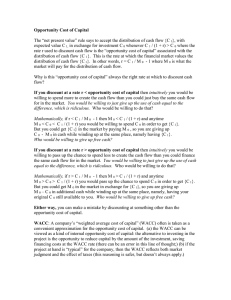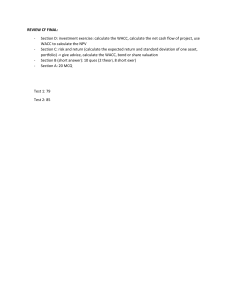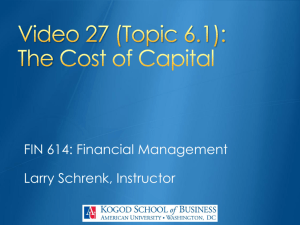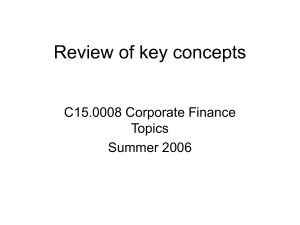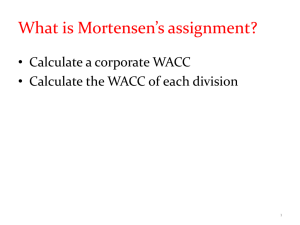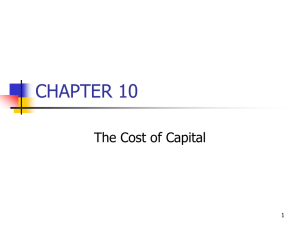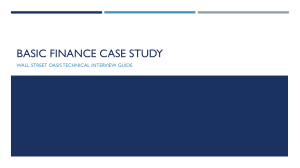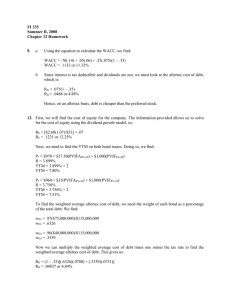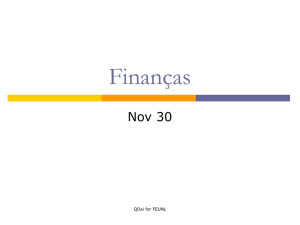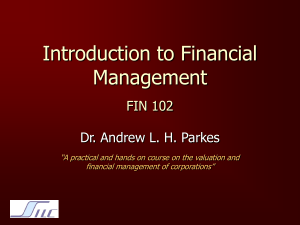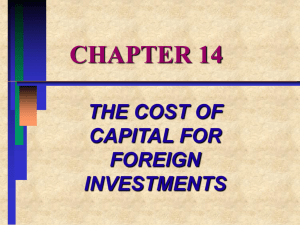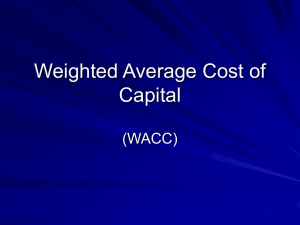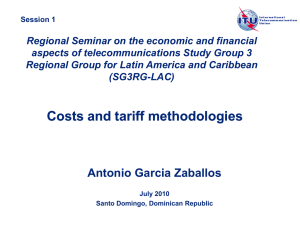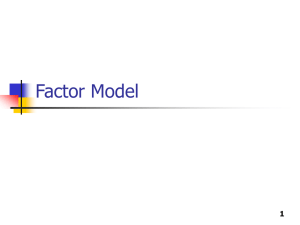Opportunity Cost of Capital
advertisement
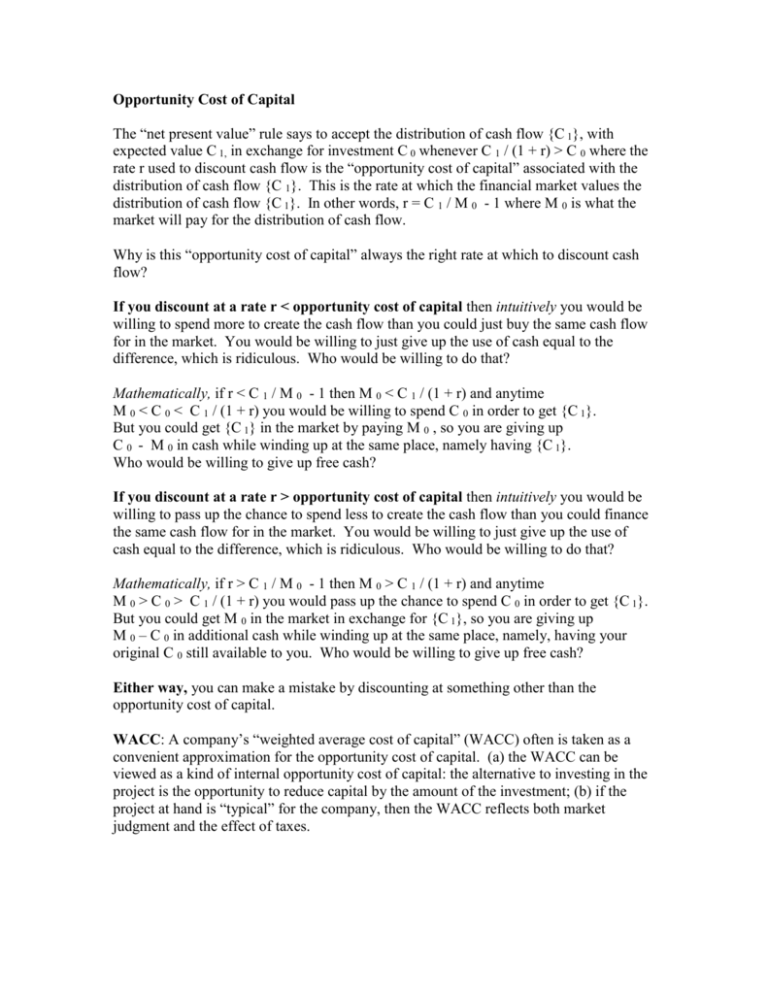
Opportunity Cost of Capital
The “net present value” rule says to accept the distribution of cash flow {C 1}, with
expected value C 1, in exchange for investment C 0 whenever C 1 / (1 + r) > C 0 where the
rate r used to discount cash flow is the “opportunity cost of capital” associated with the
distribution of cash flow {C 1}. This is the rate at which the financial market values the
distribution of cash flow {C 1}. In other words, r = C 1 / M 0 - 1 where M 0 is what the
market will pay for the distribution of cash flow.
Why is this “opportunity cost of capital” always the right rate at which to discount cash
flow?
If you discount at a rate r < opportunity cost of capital then intuitively you would be
willing to spend more to create the cash flow than you could just buy the same cash flow
for in the market. You would be willing to just give up the use of cash equal to the
difference, which is ridiculous. Who would be willing to do that?
Mathematically, if r < C 1 / M 0 - 1 then M 0 < C 1 / (1 + r) and anytime
M 0 < C 0 < C 1 / (1 + r) you would be willing to spend C 0 in order to get {C 1}.
But you could get {C 1} in the market by paying M 0 , so you are giving up
C 0 - M 0 in cash while winding up at the same place, namely having {C 1}.
Who would be willing to give up free cash?
If you discount at a rate r > opportunity cost of capital then intuitively you would be
willing to pass up the chance to spend less to create the cash flow than you could finance
the same cash flow for in the market. You would be willing to just give up the use of
cash equal to the difference, which is ridiculous. Who would be willing to do that?
Mathematically, if r > C 1 / M 0 - 1 then M 0 > C 1 / (1 + r) and anytime
M 0 > C 0 > C 1 / (1 + r) you would pass up the chance to spend C 0 in order to get {C 1}.
But you could get M 0 in the market in exchange for {C 1}, so you are giving up
M 0 – C 0 in additional cash while winding up at the same place, namely, having your
original C 0 still available to you. Who would be willing to give up free cash?
Either way, you can make a mistake by discounting at something other than the
opportunity cost of capital.
WACC: A company’s “weighted average cost of capital” (WACC) often is taken as a
convenient approximation for the opportunity cost of capital. (a) the WACC can be
viewed as a kind of internal opportunity cost of capital: the alternative to investing in the
project is the opportunity to reduce capital by the amount of the investment; (b) if the
project at hand is “typical” for the company, then the WACC reflects both market
judgment and the effect of taxes.
